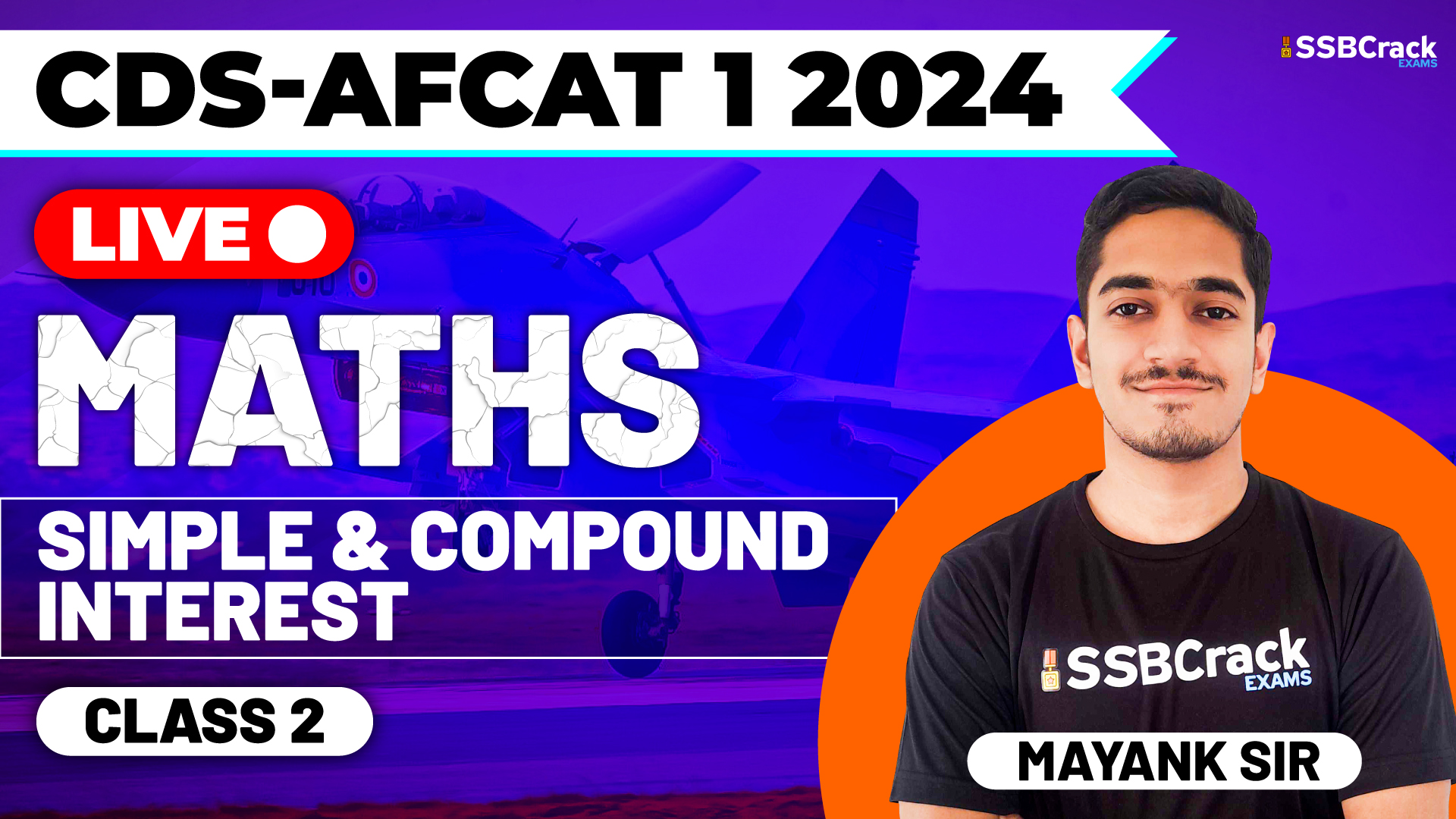Competitive exams like the CDS (Combined Defence Services) and AFCAT (Air Force Common Admission Test) demand not only theoretical knowledge but also practical problem-solving skills. One crucial topic that plays a pivotal role in these exams is “Compound Interest.” In your recent class, you ventured into this fascinating domain, where you were introduced to essential formulae, clever tricks, and practical questions to master this critical aspect of the exams. This blog will provide you with an overview of the key takeaways from that class, emphasizing the importance of mastering compound interest for CDS and AFCAT exam success.
Understanding Compound Interest: The Building Blocks
Before diving into the practical applications and tricks, let’s revisit the fundamental concept of compound interest.
Compound Interest Formula:
A = P × (1 + (r/n))^(nt)
Where:
- A = The future amount or final value of the investment or loan, including both the principal and compound interest.
- P = The principal amount (initial investment or loan amount).
- r = The annual interest rate (expressed as a decimal).
- n = The number of times that interest is compounded per year.
- t = The number of years the money is invested or borrowed for.
Key Formulae and Tricks
- Calculating Compound Interest:Compound Interest (CI) = A – PThis formula allows you to calculate the interest earned or paid on a principal amount over a specified period with compounding.
- Finding the Principal Amount:P = A / (1 + (r/n))^(nt)If you know the future amount, rate, compounding frequency, and time, this formula helps you determine the initial principal.
- Finding the Rate of Interest:The formula for calculating the rate of interest in compound interest scenarios is complex and is often solved using iterative methods or specialized calculators.
The Power of Compounding
One of the fundamental concepts you learned is the power of compounding. In compound interest, interest is not just calculated on the initial principal; it is also calculated on the accumulated interest from previous periods. This compounding effect results in the growth of investments over time.
Why These Formulae and Tricks Matter
- Efficiency in Problem Solving: These formulae and tricks streamline the process of solving compound interest problems, allowing you to arrive at the answer quickly and accurately.
- Understanding Financial Planning: Mastery of compound interest is essential for financial planning, investments, savings, and understanding the impact of interest on loans and investments.
- Real-World Applicability: The concept of compound interest is not limited to exams; it has practical applications in financial decision-making, investments, and banking.
Practical Questions: The Key to Mastery
In your introductory class, you likely encountered a variety of practical questions that tested your skills in applying these formulae to real-world scenarios. These questions covered investments, loans, savings, and financial planning, where understanding compound interest is crucial. The more you practice, the more confident and proficient you become in solving these problems.
Conclusion
Your introductory class on compound interest in CDS and AFCAT preparation has equipped you with valuable formulae, tricks, and practical problem-solving skills. Embrace these tools as your companions on your journey to success. As you continue your studies and practice, you’ll find that these techniques become second nature, enabling you to conquer compound interest questions with ease on the day of the exam. So, keep practicing, stay focused, and remember that mastering the fundamentals is the foundation of excellence. With dedication and practice, you are well on your way to achieving success in the CDS and AFCAT exams. Good luck!



















